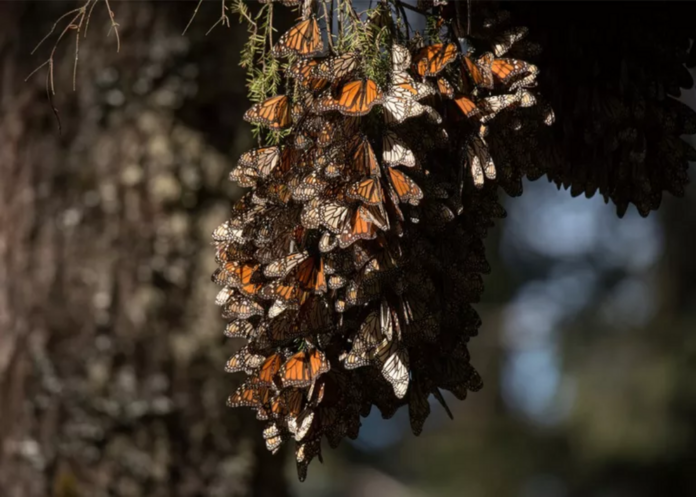Eastern Mmonarch butterfly population hints at recovery
Fact checked by Katherine Martinko
There were many more monarchs in Mexico last winter than the year before.
There’s some good news for monarch butterflies.
The existence of butterflies last winter in forests in Mexico was 35% higher than the year before, according to a new study by the World Wildlife Fund (WWF). Researchers say this is a cautious sign of recovery after many years when the species has declined.1
“The most important finding was the increase in the surface occupied by monarch butterfly colonies in Mexico, that means that the eastern population in North America grew,” Eduardo Rendón-Salinas, monarch butterfly expert and deputy director of the Terrestrial Ecosystems Program for WWF-Mexico, tells Treehugger.
The good news is fragile, however.
“It is important to consider that this increase in population is in the short term, year by year; so, in this context we don’t have to be very optimistic,” Rendón-Salinas says. “Insects such as monarch butterflies can fluctuate widely in short time lapses, in that sense we need to continue with efforts in all of North America, planting milkweeds in Canada and United States, preserving the overwintering sites in the Mexican forest, and promoting flowering plants in the flyway in all three countries.”
The presence of monarch butterflies in Mexico increased in the last overwintering season in and near Mexico’s Butterfly Biosphere Reserve. Butterflies occupied 5.19 acres in December 2020 and then grew to 7.02 acres in December 2021.2
Researchers are unable to count individual butterflies so they instead measure the amount of forest that the insects occupy each winter. This area calculation in and around the reserve offers a helpful indicator of population numbers.2
“The increase in monarch butterflies is good news and indicates that we should continue working to maintain and reinforce conservation measures by Mexico, the United States, and Canada,” said Jorge Rickards, general manager of WWF-Mexico, in a statement. “Monarchs are important pollinators, and their migratory journey helps promote greater diversity of flowering plants, which benefits other species in natural ecosystems and contributes to the production of food for human consumption.”2
Milkweed, Logging, and Climate Change
Researchers have long been concerned about the steady decline in the eastern monarch population. In 1995-1996, butterflies that were overwintering covered almost 45 forest acres in Mexico. But there’s been a decided decline in their numbers.2
One of the main reasons for the drop includes the loss of milkweed, which is the only plant that monarchs use for laying their eggs and the only food that monarch caterpillars eat. In addition, illegal logging in the habitat plays a part. Although the WWF points out that illegal logging has been less common in the areas of the reserve where butterflies live, it still has harmful effects on the monarch population.2
In addition, climate change has had an impact because warming temperatures change the migration route that monarchs take throughout Canada, the United States, and Mexico.2
But this last season, there were positive changes.
“In the spring of 2021 monarchs returning from the overwintering area in Mexico arrived early and in good numbers to Texas,” says Rendón-Salinas. “Additionally, they found enough milkweeds in that area, which is the only plant where monarchs lay their eggs and monarch caterpillars eat from. Therefore, monarchs’ reproduction went well, for the next generations to continue the reproduction cycle along their migration North.”
Ecosystem Indicators
Researchers say it’s important to study these iconic insects because of their important role in the ecosystem.
“The monarch butterfly is part of the culture for all countries in North America; furthermore, they are indicators of the health of the terrestrial ecosystems because when monarchs have good levels of population that means availability of milkweeds for the immature stages of monarchs’ life cycle and good availability of flowering plants for adults that migrate,” Rendón-Salinas says.
“In the same context, monarchs are important pollinators because they are millions and millions of individuals that visit tons of flowering plants promoting pollination and genetic biodiversity.”
The survey has been conducted for three decades by conservationists in Mexico.3
“Currently it is one of the most important monitoring in insect research,” Rendón-Salinas says. “Thanks to its results we can establish strategic management, restoration, and preservation of all habitats that are used by this emblematic species.”

